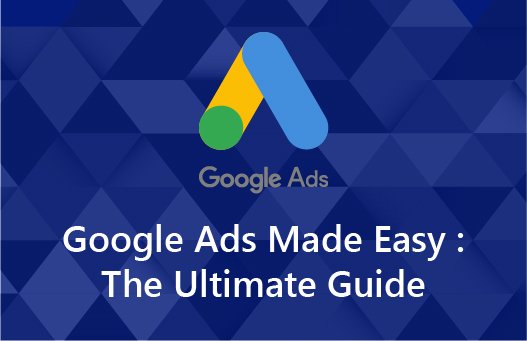
Advertising is a form of sponsored marketing communication that businesses leverage to reach their target audiences and attract them towards their products, services, or brand. Traditionally, advertising was confined to mostly the print media and electronic media ( television and radio).
However, the last decade has seen a shift from traditional advertising to digital advertising using online platforms like Google, Facebook and YouTube. These platforms are not only more cost effective than traditional platforms like print and television but also provide the flexibility of reaching a wider audience belonging to a certain age profile, sex or interest.
Currently, many digital platforms offering different ad formats ( such as text, video, image-based ) are available to marketers and choosing the right platform can become confusing. Choosing the right platform is critical to the success of any marketing campaign. Google Ads is by far the most popular pay per click platform and understandably so. Google has an extensive reach with about 246 million unique visitors in the U.S. alone.
Today, let’s do a deep dive and get into more specific details about Google Ads.
In this Google Ads guide, you will learn about
What are Google Ads?
- Types of Google Ads
- How Google Ads work?
- What are Keywords and their importance in Google Ads?
- How to write effective ads?
- How to set up your Google Ads campaign?
What are Google Ads?
Do you know Google owns 88.47 % of the global search market share?
Google AdWords is an online service by Google, which is used to create paid advertisements that appear on the Google search engine results page. It is also used to display ads on other websites.
Google Ads works on a pay per click (PPC) basis where an advertiser pays to Google each time a user clicks on its ad. Online advertising through Google Ads is very beneficial as it helps you to capture and reach the audience, which you may not be able to reach organically.
Google Ads also allows you to retarget your audience, which may have come into your contact earlier. You may have seen that sometimes, a product you just viewed on a website starts to appear on other websites you surf through. This is called retargeting.
Below are some examples of Google ads; you can see that the ads have a tag labelled as ‘Ad’ below the heading.
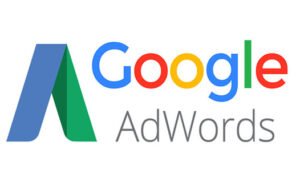
The ads which appear on the search engine results page (SERP) are given a fixed position; that is above the organic search results.
Google Ads appear on top of the SERP and are the first thing that a user will see. Therefore, investing in Google Ads is a good option if you want to expand your customer base.
Types of Google Ad Campaign
The various types of Google Ad Campaign are:
1.Google Search network

These Ads appear on the websites, apps, and search results page when a keyword is searched related to your domain.
These Ads mainly appears on
- Google search sites: The Search network ads appear on Google search sites such as Google search and various other Google platforms such as Google play, maps, images, etc.
- Google search partners: The search network ads might also appear on Google search partner websites.
For e.g., The text ads will appear on various non-Google websites, video and other Google sites and product ads will appear on websites which show link for e-Commerce sites.
The different formats of Search network ads are:
- Text Ads
- Dynamic Search Ads
- Call-only Ads
- Shopping Ads
- Image and video Ads
2.The Google Display Network
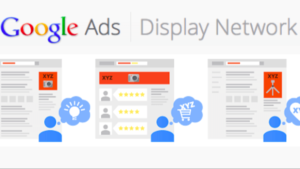
These ads do not appear when the keywords are searched for. These appear when users are surfing through websites or YouTube or any other web application or mobile application.
These are helpful to gauge the user’s attention and promote your goods and services.
The various ad formats available on display network are:
- Responsive Display Ads
- Image Ads
- Engagement Ads
- Gmail ads
3.Shopping Campaigns
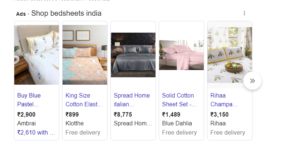
Shopping campaigns are basically for retailers who want to promote their products online and attract traffic towards their website. These ads are not just text ads but a combination of text and images.
These ads appear on the following:
- Google Shopping (in select countries)
- Google Search, next to search results (separate from text ads) and Google Images
- Google Search Partner websites (if your campaign is set to include search partners)
- The Google Display Network
4 Video campaigns
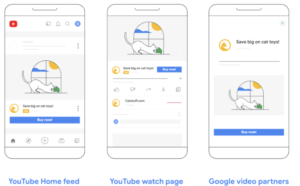
Video Campaigns are video ads that run on YouTube or other Google display network. These ads are beneficial when you want to engage better with your audience.
There are various video ads formats, such as:
- In-stream Ads
- Video Discovery Ads
- Out Stream Ads
- Non-skippable In-stream Ads
- Bumper Ads
5. Apps Campaign
Apps Campaign allows your ads to appear across different properties of Google, such as Google Search, Google Play, YouTube, the Google Display Network, AdMob, Google Discover, and apps that host app ads.
How Google ads work?
Several advertisers are bidding for a keyword or group of keywords, but Google does not show ads of all the advertisers. The ads to be displayed are chosen based on an auction.
You must be wondering how this auction takes place and on what basis are ads ranked. Let us understand this step by step.
Many people want to advertise for similar keywords or services, so Google has to choose which ads to show at the top of the placements. To decide placements, Google does an auction.
Let us look at how this auction takes place:
- A user searches for a keyword or service on Google.
- Google checks using its algorithm if an advertiser is bidding on that search terms.
- Google examines the ads on three main terms:
Your Bid: This is the first factor, which means that the bid amount you have set for your ad. This is also called Max CPC. It is the amount the bidders are willing to pay for their keywords.
Quality Score: Quality score is an essential aspect that determines the eligibility and placement of your ads on the search results page. The score lies between 1-10, the higher your score, the better are your chances of appearing to the user.
The quality score is calculated using two factors, which is the relevancy of your keywords and the landing page.
The quality score is basically how Google decides whether your ad is relevant to the user, based on which your ad may or may not appear in the search results page.
Ad rank: Your ad rank is the deciding factor that determines your placement in the search results.
The ad rank is calculated by Google using the below formula:
Ad rank = CPC bid x Quality Score
How much does the advertiser pay?
The amount that advertiser pays is called cost per click (CPC), and it is calculated as:
CPC =Ad rank of advertiser below you/quality score+$0.01
So every time you type a keyword, Google runs an auction to check how many advertisers are bidding for that keyword and selects which ads to show based on the above factors.
The ad with the highest ad rank appears on the top of the SERPs page.
Let us understand this further by taking an example:
Four advertisers are bidding for the keyword “murals,” so every time a user searches for a mural, Google will run an auction for placements of ads on SERP.
It is important to note that Google will only consider your ad for auction if your ad is relevant. Even if you are bidding the highest amount, but your ad is not relevant, your ad will not even be considered for the auction.
Let us go back to our example. After the auction, each ad will be given a rank, and the ad with the highest ad rank will be on the 1st position.
|
Position on SERP |
Advertiser |
Max CPC |
Quality Score |
Ad Rank |
|
1 |
A |
$4 |
9 |
36 |
|
2 |
B |
$6 |
5 |
30 |
|
3 |
C |
$9 |
2 |
18 |
|
4 |
D |
$10 |
1 |
10 |
Here you can see that although advertiser D is bidding the maximum amount, it is still ranking low and not in the first position.
The money that each advertiser will pay will be as follows:
We know CPC= Ad rank of below advertiser/quality score+ $0.01
Advertiser A=30/9+$0.01=$3.34
Advertiser B=18/5+ $0.01= $3.61
And as follows.
You can see that although advertiser B is on the second place, it is still paying more than A.
Therefore, Google Ads is more about being relevant and optimizing your ad and landing page experience rather than bidding higher for a particular keyword.
What are Keywords and their importance in Google Ads?
Keywords are words, phrases, or groups that a user searches for on a search engine. They play a key role in the success of your Ad Campaign. We are going to touch down on this topic and explore keywords in-depth for search ads.
The three main factors while choosing your keywords are:
- Relevance
- Traffic
- Competition
Since in Google Ads, you pay every time a user clicks on it, you must invest a good amount of time while choosing keywords.
Let us understand keywords and their importance in Google ads with an example.
Say you are a Dog Trainer, and you have just launched your website, and you would like to attract more customers, so you are looking to set up a campaign on Google Ads.
The first step before setting up an ad would be to select the words or phrases on which you want the user to find you.
Here are some points you should remember while choosing keywords:
- Choose shorter keywords rather than long phrases as people rarely search for long detailed sentences and prefer short phrases.
For e.g.:
- Dog Trainer who is expert for all breeds with experience
- Expert Dog trainer for all breeds
The 2nd one is briefer, and people are more likely to search for it, thereby, increasing the chances of you getting found.
- Choose keywords with high traffic and relevance and low competition because if a keyword has high competition, many people will be bidding on that keyword, and it will be challenging to rank on that, instead you can bid on long-tail keywords which are also relevant but have less competition.
For e.g.:
SEO is a high competition keyword, but what is SEO is a long-tail keyword and would be having less competition.
Since you pay every time a user clicks on your ad, you only want your ad to appear to the right audience so that it gets clicked by the right people. To make sure that your ad only shows to your target audience, let us understand what negative keywords are and what are keyword match types.
What are Negative keywords?
Suppose you have a bakery, and you only make eggless cakes, and people search for ‘cakes’, and you have put an ad with keyword ‘best cakes’ but without specifying the word eggless.
So people who don’t want eggless cakes will also click on your ad and obviously go back, seeing that you offer only eggless cakes. But you will have to pay for that click.
To avoid such wastage of funds, we use negative keywords, which are used to prevent your ads from popping up when people search for keywords that are not relevant to your business.
For example, here you can use
Cakes online –egg
Negative keywords are preceded by – and are helpful to avoid your ad showing when people search for keywords not relevant to your business.
What are Match Types?
Sometimes your ad may also appear when people search for other terms that you did not choose but is somewhat related to your business
For example, you have put up an ad for woollen caps, and your ad appears even when people search for the word caps.
This is called broad matching; search engines show your ad when people search for variations of your keywords.
One way to prevent ads from appearing on these searches is to choose more specific keywords; you can do this by making your keywords phrase match by placing quotations around the keywords.
For example, ”woollen caps”
Making your keywords phrase match will only show your ads for this specific keyword but will also exhibit even if the plural of your keyword is searched or even if someone adds words before or after your keyword.
For example, Best Woollen Caps or Trendy Woollen caps.
The next match type is exact keywords; it is denoted by square brackets, they restrict the keyword, and your ad will only appear when the exact keyword is searched.
For example, [Woollen Caps]
Now even if people search for Best woollen caps, your ad won’t appear.
How to write effective Google Ads?
Appearing on the top of search results is not the finish line. The next very crucial step is to make the user click on your Ad, and for that, you need to write compelling ads.
While writing any ad, the most important thing to keep in mind is relevancy. Relevance is the key, choose relevant keywords that will perfectly suit your intent behind the advertisement and also satisfy the user query.
For example, If a user wants to search for Customized Bouquets Delivery
And results that appear are
1.Bouquet Delivery |All kinds of flowers | Customized Bouquets starting form 200
2.Bouquet Delivery| All flowers available
3.Bouquets
Here you can see that the first ad is the most relevant as it clearly defines what the ad is about and satisfies the query with the right search result.
Relevance is not only limited to the keywords you use but also the landing page the user lands on. Landing Page is the first page a user lands after clicking on the ad.
So it is as important as the ad structure. Search engines reward relevant adverts with higher positions on the search results page.
Another way to make your ads effective is Ads group, by dividing your products or services into separate campaigns and ad groups, you can show ads that help customers find exactly what they’re searching for.
Point to remember to write effective ads:
- Relevancy is the key
- The landing page is as important as the ad structure
- Use ad groups to reach more customers
- Always have a call to action
- Measure your campaign’s success using metric
How to set up your Google Ad Campaign
So far, we have understood what Google ads are and how they run. Now let us explore how to create your Google ads campaign step by step using Google AdWords:
Step1. Choose your advertising Goal. You should choose the goal which best suits your business needs.
Step2: Choose the location of people you want to target. You can also set a radius around your business to refine your ads more towards a specific location.
Google Ads offers a great deal of customization. Therefore, it is essential to understand and study your audience beforehand to run a successful Google ads campaign.
Step3: This step is to define your business category and products or services. You can use various tags to define your business more clearly.
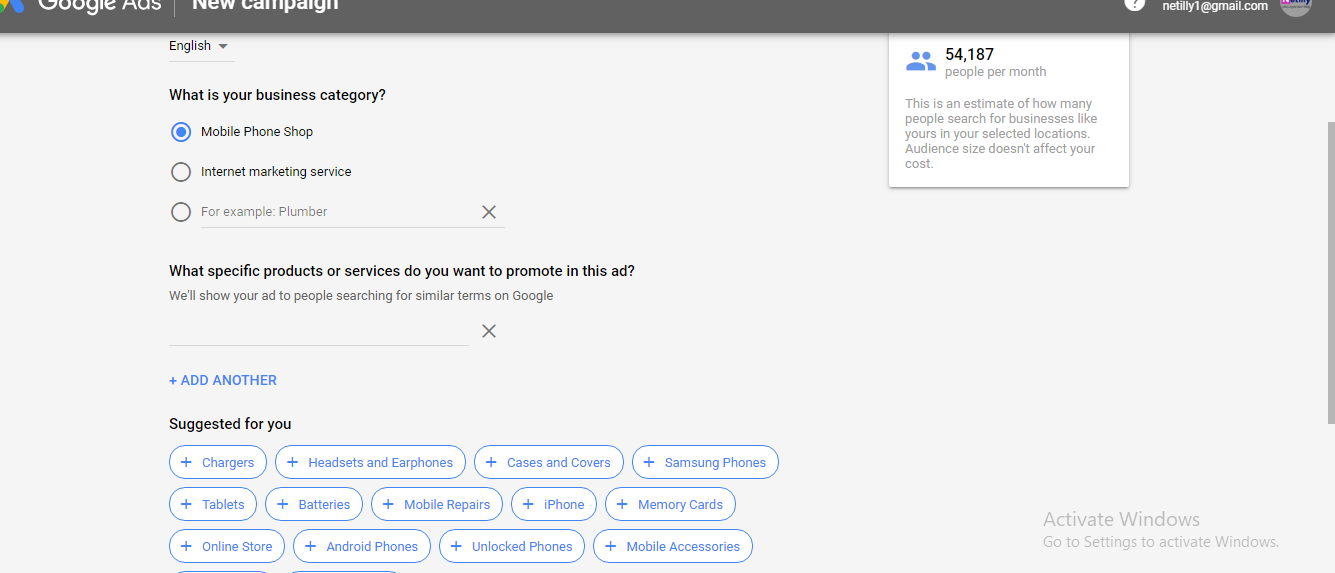
Step 4: The next step is to write your ad copy. This is the most crucial step as writing effective ads is critical to make the user click on it.
Just like the meta title and description are important for on-page SEO, giving the right headlines to your ad will help you attract more clicks on your ad
Step5: The next step is very crucial as well as important, which is selecting your budget. Keep in mind that bidding the highest won’t always get you the top spot, therefore bid at a medium level, which is not so high or low and focus more on landing page optimization to get higher ad position.
The next two steps call for reviewing your campaign settings and setting up billing information. And that’s it! These are the simple steps in which you can create your Google ads.
Conclusion:
Ads are still one of the most used marketing communication to reach audiences and generate leads. Online Ads offer a lot of customization to reach a specific target audience.
Google Ads are all about relevancy, and so is Google search. You should always focus more time on choosing relevant keywords and optimizing your landing page experience rather than bidding the highest amount.
If you wish to make the most of your PPC campaigns and get a better return on investment, you can contact us.

Comments are closed.